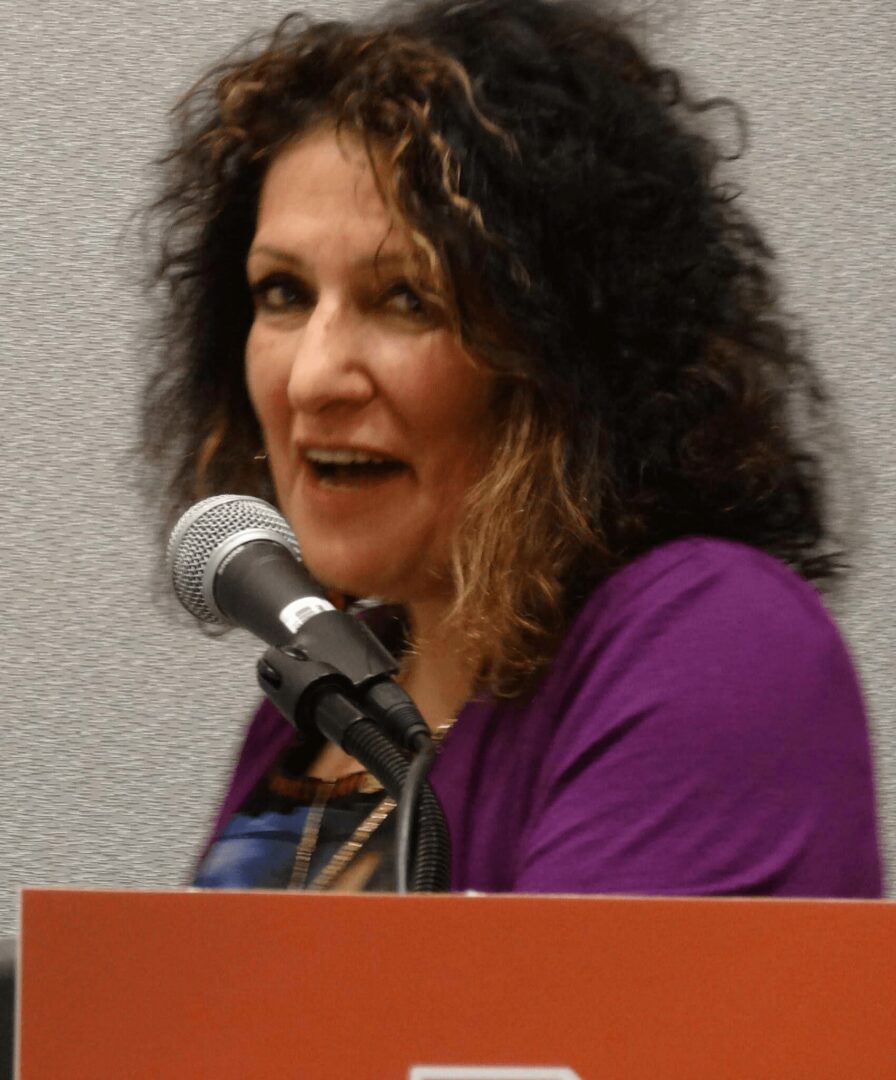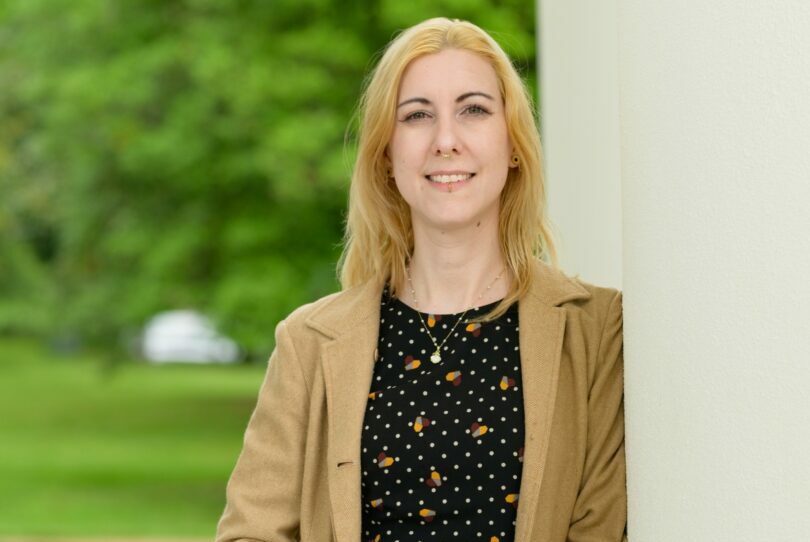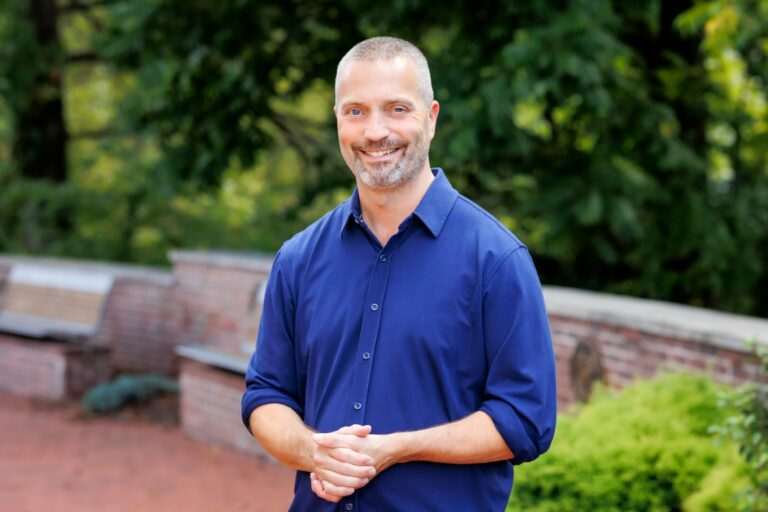We were lucky to catch up with Elmaz Abinader recently and have shared our conversation below.
Hi Elmaz, really happy you were able to join us today and we’re looking forward to sharing your story and insights with our readers. Let’s start with the heart of it all – purpose. How did you find your purpose?
I found my purpose in the quiet, or maybe I should call it silence. The silence of a six-year-old sitting under a tree hiding. The branches hung low, drew a curtain between me and the voices. From the loud house, loud in two languages. Loud because my family loved who we were but were also ashamed. And so, we tried to change.
My parents came from Lebanon and ended up in a corner of Pennsylvania on the West Virginia border. The only Arab family in a white town in the time when immigrants were expected to assimilate. Completely. But we couldn’t really do it even though, we changed my name, peroxided my body hair, straightened my curls. The town-facing me who spoke with perfect English, dressed too prissy, and was too shy to speak, was different from the home-me, a little messy, loud and plopped yogurt on everything I ate. And like many others who come from someplace else, my family kept our two selves in their boxes. Dancing, shouting, feasting and Arabic rocked our small house. But in those same rooms, we were warned, in English, not to be “too much” out there, to be better.
So, some of the story I inherited from my multi-lingual, dignified parents, got crushed, pushed into the ground. Who I was, where I came from, what journey brought my family from Lebanon to Appalachia. Inside the house, my father loved to tell about his life in the old country and in Brazil, the first place they emigrated. My mother filled the air with smells of the Arab kitchens and gardens. She never spoke of home with the same romantic spin as my father but kept the music and dancing loud, while she slathered Vaseline on our unruly curls.
This became a reflex, dividing the life. Kind of a necessity because conformity felt like the path to success.
Then a war happened. When the Lebanese Civil War broke out in 1975, the images from Beirut and from the south, became metaphors for the worst kind of destruction. You’d hear, when one was describing a terrible neighborhood, someone say, “it’s like Beirut.” The beautiful country with the turquoise sea became an image of destruction. People asked me if I was a terrorist, made faces at the word Lebanon.
When the war broke out, I was already writing. Poems about being lost, disenfranchised, strange. I had graduated college and was on my way to an MFA program at Columbia University. And I pivoted my work. My poetry moved away from the mewlings of a young adult to a new purpose–the narrative of my family. Here, see my grandmother, in the bottom of the ship with her two daughters, scheming to get them to the US to join their father; my mother, returning to Lebanon at 21, marrying her cousin as expected, my father, back in Lebanon from Brazil, fighting with the nationalists and then forced to leave his home country again. Specifics were important—my pen was a microscope, a close-up lens. I knew the danger of a single story, before Chimamanda Adichie articulated it for us. These poems, while nuanced, documented lives that could be one of many stories from one of many places. And each country, village, journey held a multitude of particulars that complicate characters and their worlds.
I believed that the little story could combat the big lie.
That’s what defined my purpose.
I knew there were many writers, immigrant, children of immigrants, Black and African Diasporic, Indigenous and Native, who had lives unseen, and voices unheard. Mentoring writers-of-color, the global majority (to use the non-racialized term) to center what I considered the true American stories started to infuse itself into everything I did. When I traveled for the USIA cultural programing, I talked about my canon of writers from Langston Hughes to Toni Cade Bambara to Maxine Hong Kingston. I assigned these writers in my classes. I wanted my students at John Jay College to see themselves in what they read, to hear themselves in the writing conference I produced, and to find their own voices.
My purpose materialized into an institution, in 1997, when I, along with Junot Díaz, Victor Díaz, Diem Jones, found VONA/Voices, a workshop for Writers of Color, taught by Writers of Color in San Francisco. Inspired by Cave Canem and Hurston-Wright Workshop (on the East Coast), we knew that this necessary forum, that was multi-genre, could generate a literary landscape shift. Which it did, I believe (along with other important workshops).
For twenty-two years, I witnessed transformations—not only writers finding support for the first time, but also recognizing they have a voice and a community. VONA contributed to others landing on their purpose. I can’t tell you how many of those participants, have not only gone onto publish remarkable literature and theater.
VONA wasn’t the only place I preached my gospel, so to speak. I have taught workshops around the country and around the world. Outside the academy and at my college. While I have engaged in the community, my dedication to making writing accessible to more people and their stories heightened. The forty-some years of it, has given me another mission. Teaching the teachers.I have spent years refining my teaching, opening myself to new models, anti-pedagogies, hybrid approaches. Some successful, others not so much.
I think about the community space, the goals of social justice, the diversity of purpose and journey, and I wonder if I was approaching the community writing workshops with a pedagogy that is based in justice that could deliver on the promise of creating a space to write, be seen, and heard.
My new project, a book (now a Substack) addresses the promise of a community workshop. Free to Write, Transforming Community Writing Workshops with Radical Strategies looks at leadership, practices, strategies, failures, and asks questions as well as suggests answers.
Because it’s about community workshops, I also sourced a community of workshop instructors to weigh in (through interviews) on how they approach their classes. For me, my many purposes are braided in writing this book. Elevating voices by developing effective practices so writers can find themselves, honor their stories and use their voices.
Because someone is still behind the curtain or under the tree, hiding their story, muting their voice, conforming to a social, religious or political demand. Through my writing, teaching and discussions of pedagogy, I hope to offer my hand, empower others to offer theirs, to lift them from their hiding places, and to be seen.


Great, so let’s take a few minutes and cover your story. What should folks know about you and what you do?
From day one of being in the world as a writer, I have been aware of what’s missing in the national narrative, whose voice isn’t heard, whose life is not represented, who has been silenced. As a child, I was raised in a world where protest and revolution, fighting systems, and creating programs were the response to injustice. So as an adult, in the face of injustices in the literary world, I initiated and participated in small revolutions—waging battles to illuminate the voices in the margins by providing opportunities, by mentoring others and through my own writing. These have been my goals as: a writer, a teacher, and a literary activist.
As a writer, I was one of the first (and still few) Arab Americans to have a memoir published by a trade publisher. The effort was early in the development of the Arab American literary cannon, and so I had no peer group, no allies. This publication created a visibility for me, on panels, in forums, in media and in journalism, where I persisted on highlighting the complexities of the families in the Arab American community and in the Arab diaspora. That commitment extended to complicating the narrative in two ways. One is to mentor young Arab American writers to insure intergenerational and intersectional voices, and the second is to “pass the mic” when opportunities to be heard were offered to me to underrepresented Arab-Americans writers from the countries of the Gulf and North Africa.
Access is so important, having someone lead you and remind you that your life matters buoys the psyche and nourishes the soul. I continue to preach this message in my teaching at Mills and USF where I taught the Community Teaching Project. It’s a pedagogy class on creative writing that requires the students to teach in the community. For more than ten years, students have created workshops in residential settings around the Bay Area for the unhoused, in senior homes, drug rehabilitation centers, trauma centers for LGBTQ youth and in other institutions that welcome writers to sit in community, for free. Teaching these writers to lead workshops is not just pedagogy, it’s instilling the ethic of teaching as giving, as shaping a community, as being a citizen of where you are, in the most intimate way.
Currently I am writing a book, Free to Write, Transforming Community Writing Workshops with Radical Strategies, which illuminates pedagogy specifically for workshops in the community. My practice is based on providing a workshop culture of generosity, based in justice, to create transformational moments, and ultimately deliver on the promise of creating a space to write, be seen, and heard. Although the book is for workshop facilitators for writing workshops, all leaders, who are concerned with equity and acceptance in their practice will find the book useful.
While I am finishing a novel, a book of poetry and a collection of short stories, this book represents the ethos that has driven my career, as a writer, a leader. and a literary activist. Another way of mentoring, of modeling, and keeping the push to create change. Activated.

There is so much advice out there about all the different skills and qualities folks need to develop in order to succeed in today’s highly competitive environment and often it can feel overwhelming. So, if we had to break it down to just the three that matter most, which three skills or qualities would you focus on?
I have a small study in the corner of the second floor of my house. It’s probably 10 by 12 feet with windows along one wall and a Japanese plum tree throwing patterns of light and shadow on the opposite wall.
This room tells my story: it could be called my study or my studio or my classroom. It holds so many responsibilities and so many selves.
As a writer, I need energy. The practice is a whole body and mind activity. I do not write from the neck up. I engage with all my senses and my core. And this practice extends beyond my writing and teaching.
For years, the colleges where I taught didn’t know I was a fitness instructor at the local Y. They didn’t know, before I came to campus, I led boot-camp, cycling, and body sculpting classes, eleven a week.
At the Y, the members saw me as this hard ass “princess of pain “teacher who ran steps, commanded and did two hundred push-ups, and pedaled up long hills.
Those lives stay separate and complimentary, until an article about my writing showed up in the San Francisco Chronicle.
I’ve always been that way. I lived in simultaneously in New York City and Telluride, Colorado, commuting across the country once a month, all summers and through the winter break.
I sit in music clubs, crushed with others, soaking myself in jazz sometimes for two shows in a row, and the next weekend camping in some wooded site, staring at quiet stars before crawling into my tent.
My study contains my contradictions, or should I just say complexities: The desk for on-line writing classes, the couch where I do my personal writing, the studio background with the ring light for my on-line fitness classes, the bulletin boards with biking trail maps and concert notices.
My happy place is sometimes alone with everything turned off. Or on a stage performing writing, a play, poems, or a story.
My creativity and productivity thrive on three things, if I’m picking only three:
1. Disrupting my comfort, my practices, even my identity provokes thoughtful and full work. I have written in many genres and on many platforms, finding the agility in my voice and in my creativity. This is much like working out—it’s important to surprise the body with new approaches, to create impact.
2. Being in communities that both empower and challenge me. My writing group are loving partners who wait for each other’s work, support each other’s goals and devote themselves to the refinement of our writing. I also have larger communities, who I may meet fleetingly in an online writing workshop or at a class at VONA or Hedgebook. And constant ones, like the participants in my nine fitness classes a week.
3. Being still. Although I need to travel, often, because I get inspired by being lost and finding my way, I also need to sit in the meditation of what I gather in my journeys and on my personal path. I walk trails, do yoga, read under the sun umbrella in the backyard. In these pursuits, I try not to multi-task, get distracted, take pictures, or listen to music or books. I listen to myself. And sometimes learn something new.
While some of these seem like steps or separate forces, their interconnections are undeniable. The ability to step back and gaze at the chaos, helps me to take one puzzle piece at a time, and put my world together.

Before we go, any advice you can share with people who are feeling overwhelmed?
I am connected to the world, deeply. As a traveler, a writer, a person who loves nature and as an Arab-American, the current condition of the social, political, environmental and spiritual world is worrisome. Even plaguing. I can sink into the vortex of hopelessness from seeing images from Gaza, the melting polar ice cap, the brown water from the faucets in Flint, Michigan.
Sometimes, the depth and brutality paralyze me. It’s hard to write, to pull myself away from the images and articles.
I have always said that, for me, the war happens in the kitchen. Which means the center of the family, their needs and comfort, are contained in the place of gathering and nourishment. So, when I can’t bear the larger story and its implications, I go close, to one person, one room, one family and one problem.
I can’t be in the rhetoric when I’m telling a story. The side I take is the side of the humanness and how what the conditions are for the characters of what I am seeing, reading, learning about or teaching to others.
Go close. be telephoto. Your body is a camera.
Contact Info:
- Website: https://www.elmazabinader.com
- Instagram: @elmazabinader
- Facebook: elmazabinader
- Linkedin: Elmaz-abinader
- Twitter: #morethanelmaz
- Youtube: @elmazelmaz






Image Credits
Faith Adiele
Anthony Byers
Geralyn Abinader
so if you or someone you know deserves recognition please let us know here.




